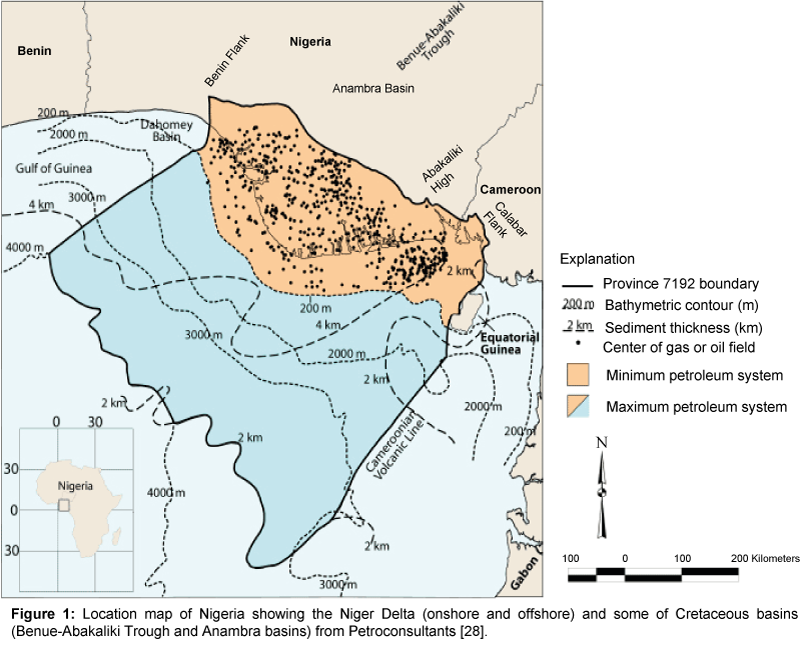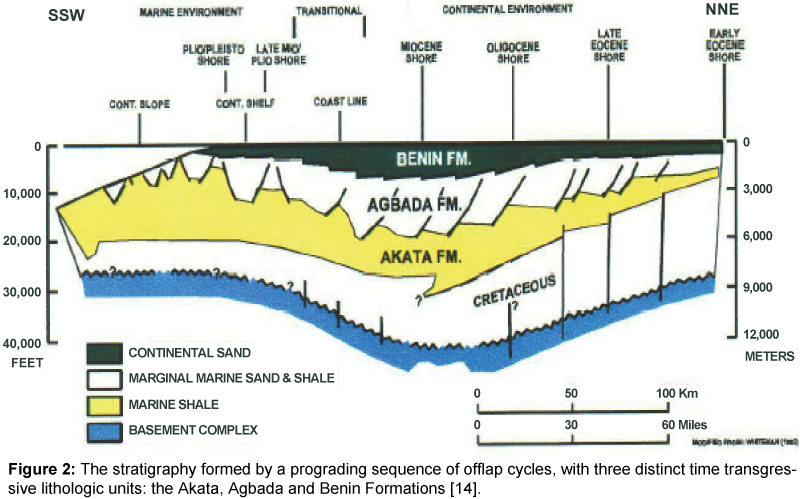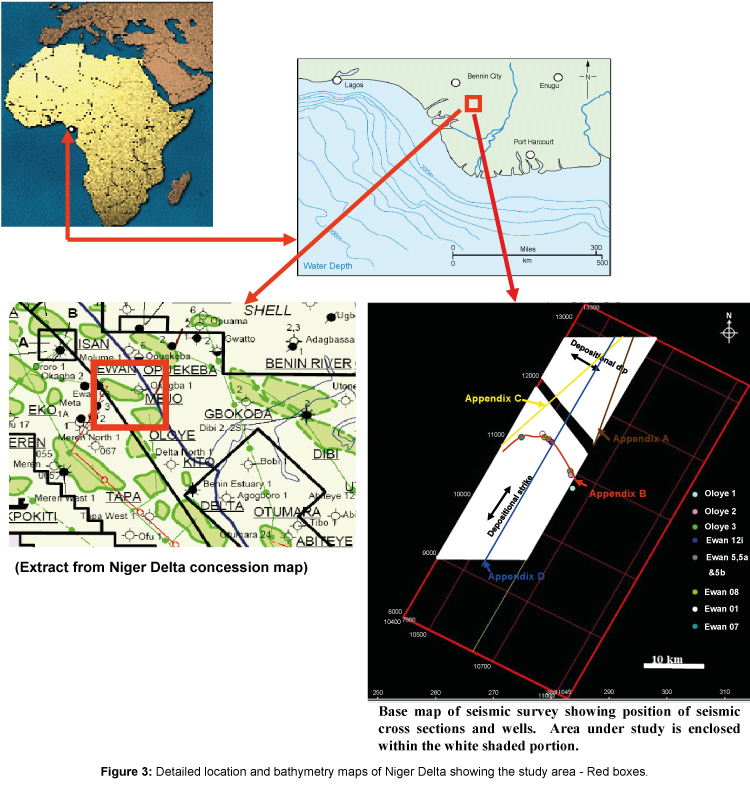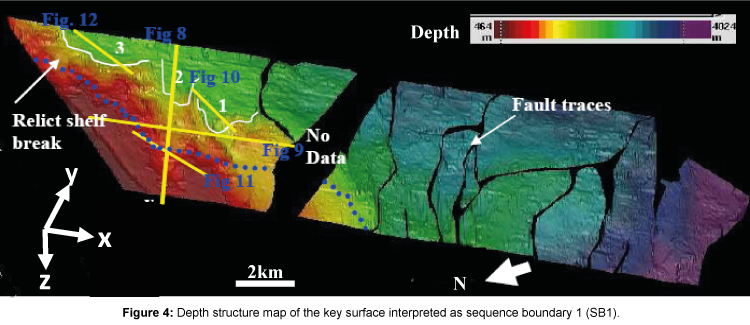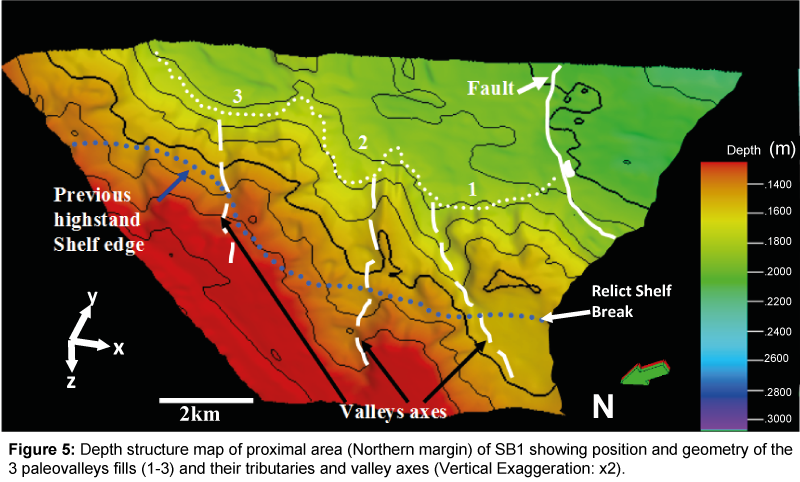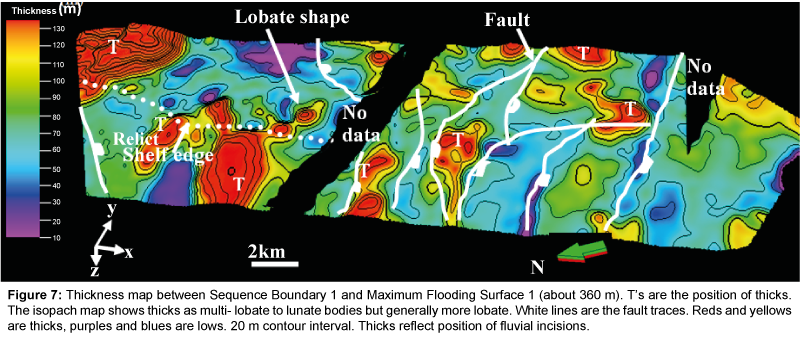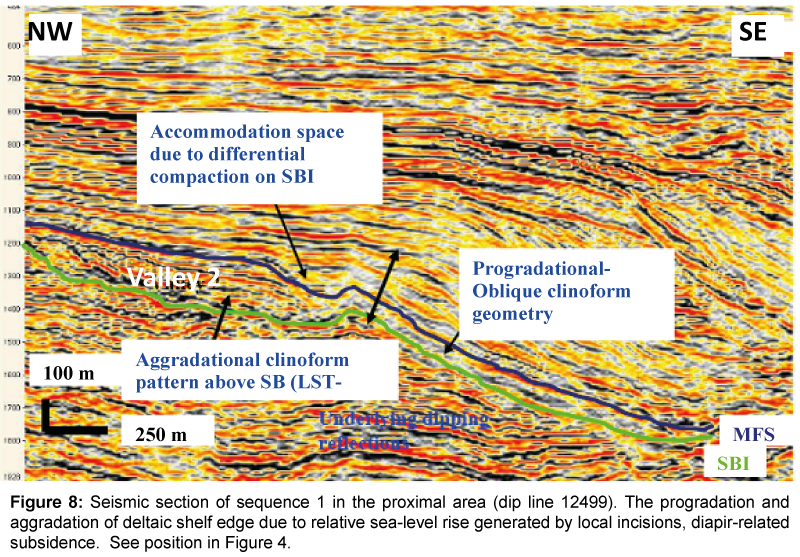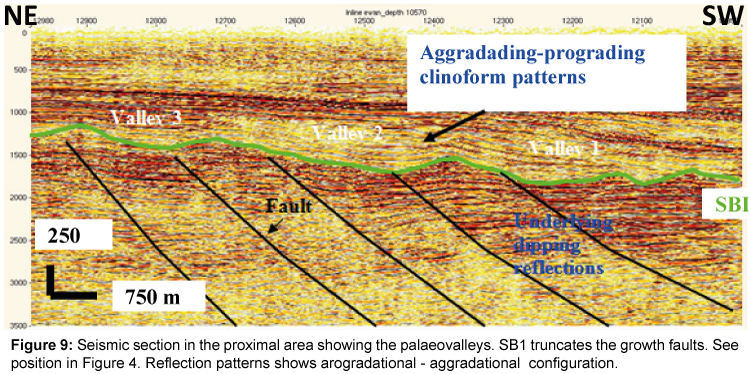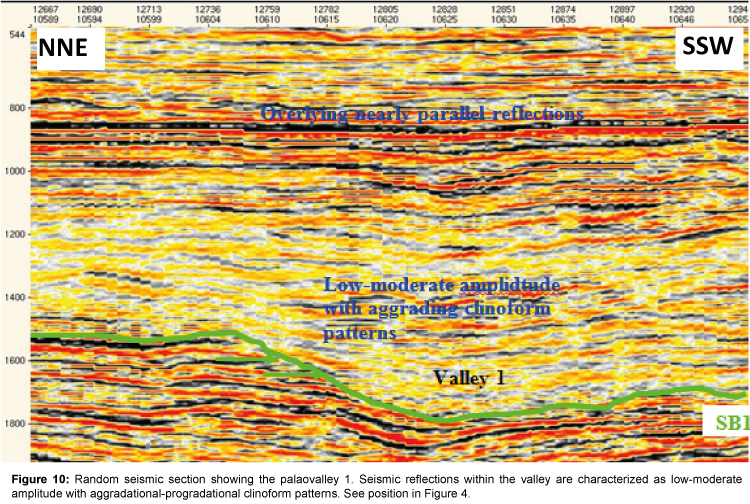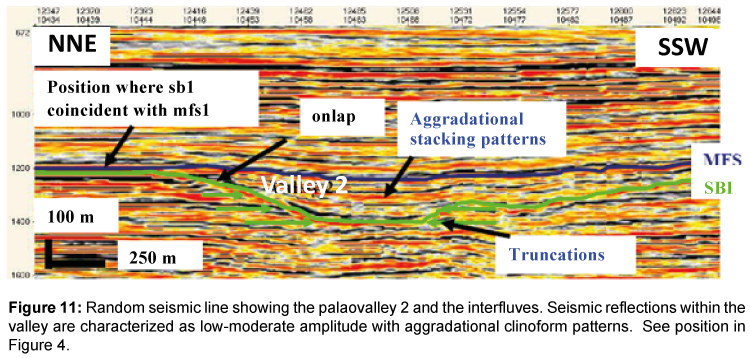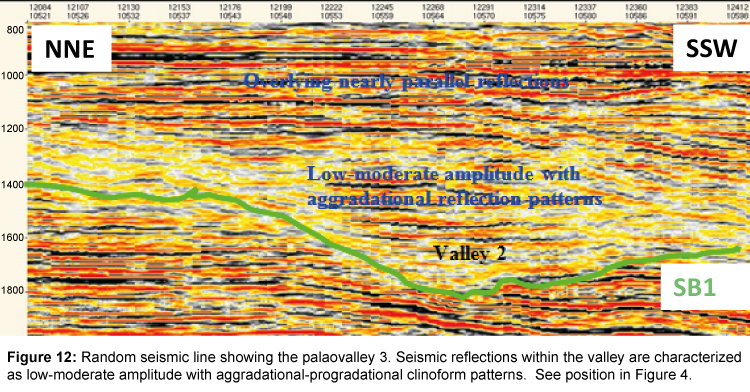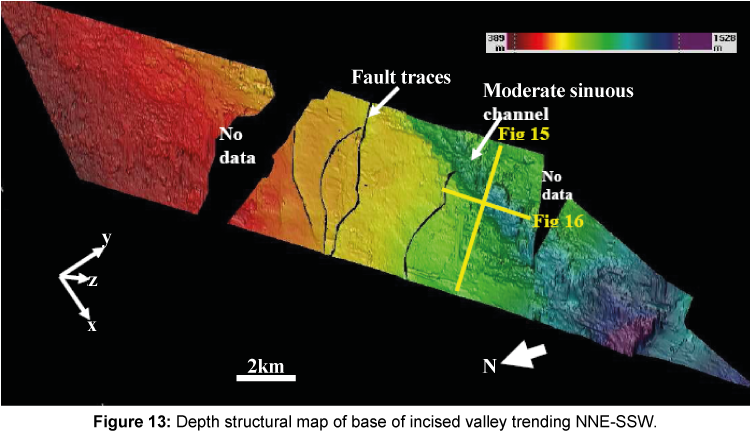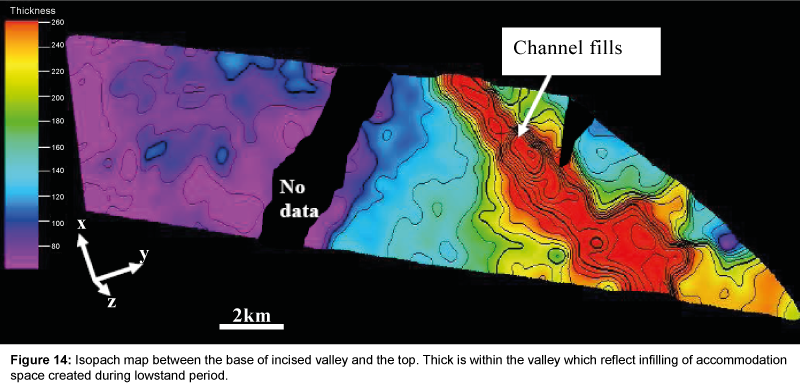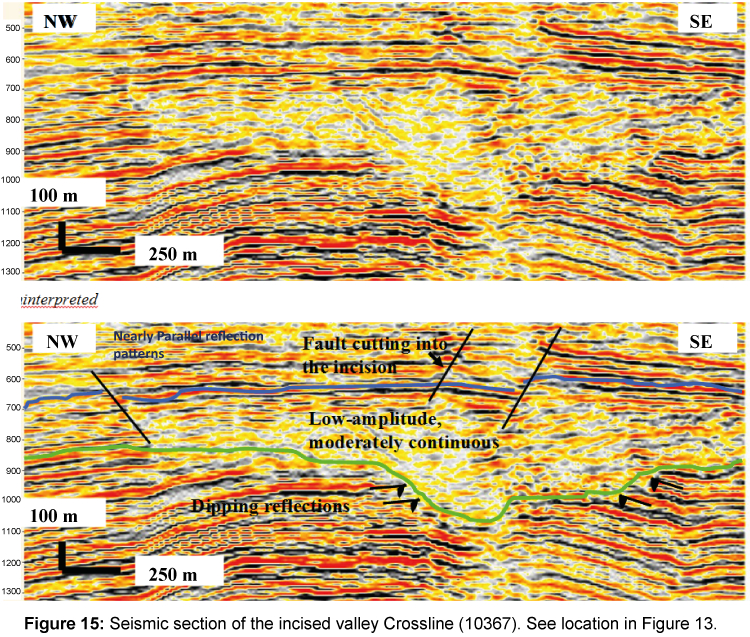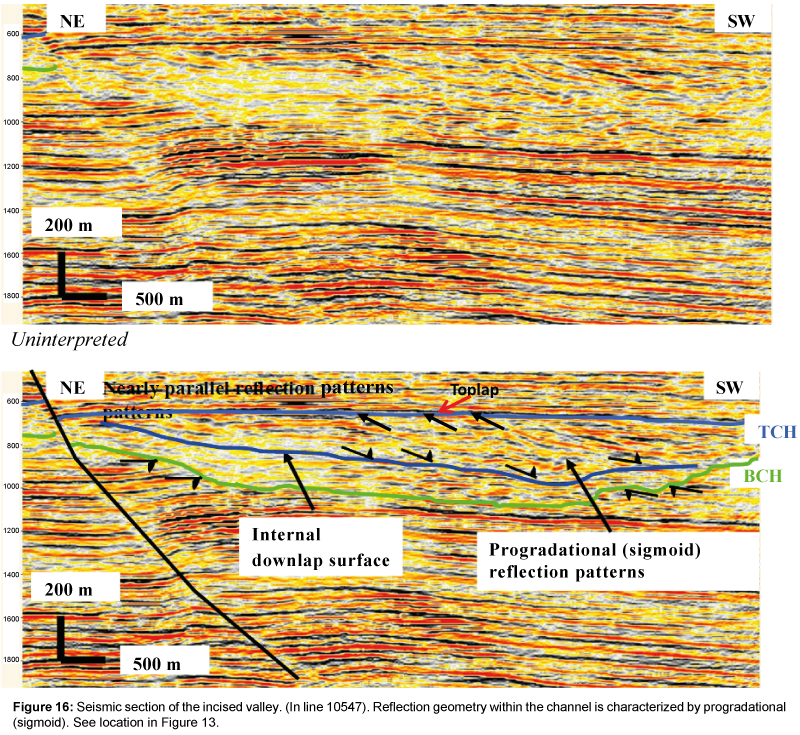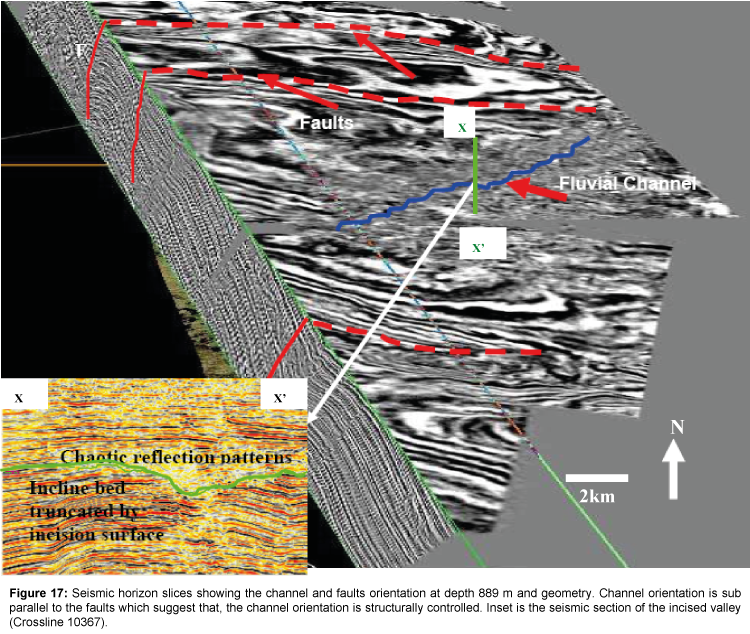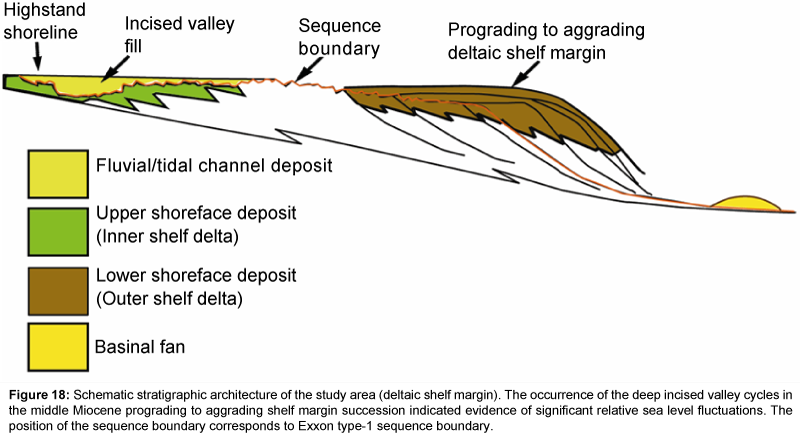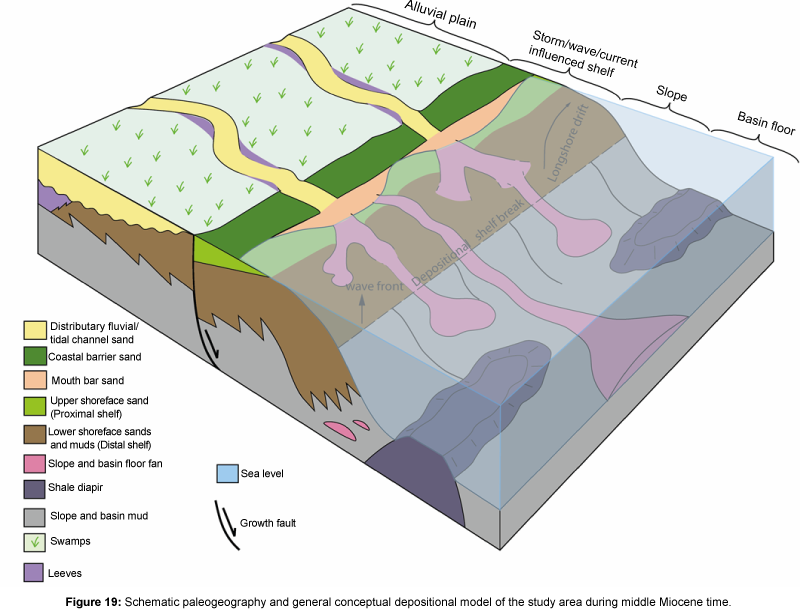Research Article Open Access
Seismic Stratigraphy and Development of Deep Fluvial Channel Incisions in the Middle Miocene Deposits, Ewan and Oloye Fields, Northwestern Niger Delta, Nigeria
Durogbitan AA*
Petrfac IES, Research and Development, Manchester, UK
- *Corresponding Author:
- Durogbitan A Abimbola
Principal Geoscientist, Petrfac IES
Research and Development, Manchester, UK
Tel: +447545822428
E-mail: adewoledurogbitan@yahoo.co.uk
Received date: April 08, 2016; Accepted date: June 22, 2016; Published date: June 29, 2016
Citation: Durogbitan AA (2016) Seismic Stratigraphy and Development of Deep Fluvial Channel Incisions in the Middle Miocene Deposits, Ewan and Oloye Fields, Northwestern Niger Delta, Nigeria. J Marine Sci Res Dev 6:198. doi:10.4172/2155-9910.1000198
Copyright: © 2016 Durogbitan AA. This is an open-access article distributed under the terms of the Creative Commons Attribution License, which permits unrestricted use, distribution, and reproduction in any medium, provided the original author and source are credited.
Visit for more related articles at Journal of Marine Science: Research & Development
Abstract
Seismic interpretation of depth converted three-dimensional seismic survey from Ewan and Oloye fields; onshore northwestern Niger Delta has helped in the identification of incised valleys (up to 350 m) deep. This study evaluated their morphologies, evolution and the local controls that influence their development. The seismic reflections of the incised valleys are characterized by low-moderate amplitude, variable internal reflections, aggradational, chaotic and progradational-sigmoid reflection patterns overlying by parallel to sub-parallel reflections configuration. The seismic reflection characteristics are probably due to variable sedimentation processes within the valleys which were affected by mass wasting. Asymmetry morphology of the valleys suggests fluvial origin while low sinuosity of the channel may indicate high gradient and high discharge. The occurrence of incised valleys landward of the shelf edge suggests and partially reflects underlying structural control. This might be caused by uplift due to shale diapirism (shelf instability). The magnitude of incision is difficult to explain in terms of sea-level fall alone because ecstaticallydriven sea level variations during the Miocene are generally reported to be less than 100 m. This suggests that the character of fluvial incisions development and depositional facies preserved within the study area is locally controlled by growth faults, rapid relative sea level changes, basin physiography (shelf edge), shelf instability, variation in sediment input, slope collapse (mass flow depositional processes and downward cutting by downslope sediment flow). The incised valleys within the study area probably serve as conduits for sediment transport to the deep water. Seismic delineation of the distribution and morphology of these incised valleys may also provide critical input for reservoir modeling and volumetric analysis.
Keywords
Middle Miocene deposits; Valleys; Sediment; Seismic delineation
Introduction
Incised valleys are features of the continental margin that are characterized by erosion [1,2]. Their origin have been linked to fluvial incision, subaerial exposure, turbidity current, faulting, folding, active diapir or salt dome and slumping [3-5]. An incised valley and its depositional fill provide good evidence of lowstand to transgressive deposition in shelf-slope shallow marine depositional setting [6-10]. The study of incised valley is very important because they serve as a potential reservoir when fill with sands [9] and also preserved sedimentation and transportation history of the area. More importantly, it helps in locating the sequence boundaries and their link with the basin floor fan [1,2]. They also serve as conduits for the transportation of sediments to the slope and deeper parts of the basin in the form of slides, slumps, and debris flows.
The development of incised valleys within the onshore Niger delta and the controls on their development appears to have received little attention for the past years. However, the focus of this paper is to reveal some of the local controls that may be responsible for the development of these deep incisions as well as the influence of the depositional processes on the incised valleys.
Geological Setting
The Niger Delta is located at the southern end of Nigeria, bordering the Atlantic Ocean and extends from about longitude 30-90ºE and latitude 40º 30’ to 50º 20’ N (Figure 1). It is situated on the Gulf of Guinea on the west coast of Central Africa. During the Tertiary it built out into the Atlantic Ocean at the mouth of the Niger-Benue river system. The total thickness of the Niger Delta sequence is not known but may be up to 12 km in the basin centre and cover area of some 75,000 km2. The stratigraphy of the Niger Delta is described as a regressive (offlap) succession with continental coarse and gravely sandstones of deltaic top facies (Benin Formation) overlying an alternation of sandstone and shale of paralic delta front facies (Agbada Formation) which in turn grade downward into marine shales of prodelta facies (Akata Formation) with turbidites [10-14]. Burke [12] interpreted the stratigraphy of the Niger Delta as five stratigraphic units (Figure 2). They are: a. Top continental sediment (Benin Formation) b. Transitional sand/shale unit (Agbada Formation), c. Marine shale unit (Akata shale) d. transitional shale-sand unit (newly distinguished) e. and an un-named bottom submarine fan unit. Exploration activities have concentrated in the past over these sequences (onshore) but as delta becomes better understood, exploration efforts are gradually shifting to both the offshore (Pliocene – Pleistocene section) and the flank of the delta, where Cretaceous prospects are expected (Figure 1). Although the geology, tectonics and evolution of the onshore (Eocene-Pliocene sequences) of the Niger Delta are fairly well know, these are expected to be refined as new analytical tools, concept and models evolve. This paper proposes a seismic stratigraphic analysis and evaluation of some of the local control on deep fluvial channel incisions within the northwester Niger delta using Ewan and Oloye fields as a case study.
Database and Study Location
Ewan and Oloye oil fields are located on OML 49 and 95 onshore of the north-west of the Niger Delta (Figure 3). The fields are currently operated by Chevron Nigeria. The structure that defines these fields is a complexly faulted rollover anticline. The stratigraphy encountered in the study area are the paralic sequence of interbedded sands and shales (Agbada Formation) of Middle Miocene-Early Pliocene age as observed from the seismic survey, biostratigraphic reports and wells data.
The database includes logs of 7 wells (gamma ray, resistivity, sonic, neutron, density etc), cores and a three-dimensional seismic cube (depth converted) of the area around Ewan and Oloye fields. Biostratigraphic reports of 3 wells were also available for age determination.
Results and Discussion
Several incised valleys were identified from the seismic data having depth range between 120-350 m. This research focus on three main interpreted palaeovalleys along interpreted erosional surface shown in (Figures 4 and 5) and the deep fluvial channel incision at the upper part of the seismic section that reaches depth of about 350 m shown in figures.
Seismic facies analysis
a) Palaeovalley 1-3: The position of these palaeovalleys defined a sequence boundary characterized as an irregular unconformity that erosionally truncates dipping reflections. At the proximal area (northern part), these three WNW-ESE trending erosional lows, interpreted as palaeovalleys, cut into the underlying strata (Figure 5; valleys 1, 2 and 3). Valley 1 is the deepest of all with up to 220 m of erosional relief with valleys 2 and 3 having up to 150 m and 120 m of erosional relief respectively. Palaeovalley 2 occurred landward of the shelf break. All valleys have tributary-like features and asymmetric cross-sections, with steeper slopes along the northern margins compare to the southern margins (Figures 6-9). Truncations of the underlying stratal and onlap characterized the erosional surface.
Figure 7: Thickness map between Sequence Boundary 1 and Maximum Flooding Surface 1 (about 360 m). T’s are the position of thicks. The isopach map shows thicks as multi- lobate to lunate bodies but generally more lobate. White lines are the fault traces. Reds and yellows are thicks, purples and blues are lows. 20m contourinterval.Thicks reflect position of fluvial incisions.
Seismic reflections within the palaeovalleys shows a variable and irregular internal reflections pattern characterized by low to moderate amplitude, low frequency reflectors with prograding-aggrading clinoforms geometry that suggest gradual infills of the valleys during transgression (Figures 10-12). Thickness variation between interpreted erosional surface (sequence boundary) in which palaeovalleys occurs and the surface that caped the valleys (interpreted as maximum flooding surfaces) is average 360 m. The thickness reflects position of the incisions and sediment infill during the time of sea-level rise. Depth structure map of interpreted maximum flooding surface revealed a differential compaction over sequence boundary related valleys (Figure 6).
Interpretation: Based on the interpreted key stratigraphic surfaces (SB and MFS) and reflection geometry, the palaevalleys infills seismic facies are interpreted to be Lowstand deposit overlying by aggradational Transgressive deposit. The Lowstand deposits are confined within the valleys, while thin and widespread transgressive deposit caped the valleys. The development of fluvial incisions (palaeovalleys) and aggrading infill reflection patterns suggest that the development of fluvial incision is characterized by fall of relative sea level below the previous Highstand System Tract (HST) shelf edge, where the sands influx to the shelf edge from the inner/middle shelf by forced regression, followed by a sea level rise (transgression). Prolonged sealevel fall have led to pronounced incisions on the shelf edge which also in turn caused instability at the shelf margin. The striking feature is the depth of palaeovalleys on the Sequence Boundary 1, which is up to 150 m (Valley 2) below the landward of previous HST shelf edge (Figure 8), partially reflects underlying structural control. This might be caused by uplift due to the shale diapirism. The fluvial incisions suggest a mechanism of lowering of relative sea level. Differential compaction over SB related valleys was observed from the depth structure map of interpreted MFS which also suggest structural control of underlying structure.
b) Deep incision at the upper seismic section: This incision has an average depth of 350 m (Figures 13 and 14). The seismic characteristics of this deep incision consist of low-moderate amplitude, variable frequency and internal reflections, chaotic and progradational-sigmoid reflection patterns (Figures 15 and 16). It is difficult to know the overall width of this fluvial channel incision due to the area extent of the survey within the study area, but the width of the fluvial channel is up to 15 km (Figure 13). Seismic reflections above the incision fill are nearly parallel, with moderate-high reflection amplitude (Figures 15 and 16). Three-Dimensional seismic slices through this incision at depth 889 m show northwest-southeast orientation of straight to low sinuous channels within a more chaotic and low amplitude background (Figure 17). The magnitude of the incision increases southward and most of the rollover anticline beds are truncated. This suggests the locus of erosion and deposition shifted basinward and has structurally controlled. This fluvial incision surfaces truncate some of the growth faults, and some of the faults cut into the channel at the top. This suggests that some of the fault were inactive during the development of this fluvial incision (Figures 15 and 16). Fault cutting into the channel may indicate tectonic response cause by the effect of differential compaction of channel fills. Thickness map between base of the channel incision (BCH) and top of the channel (TCH) is averagely, 260 m (Figure 14). Areas with thicker sediment are coincident with main axis of the channel which reflects accommodation created by relative sea level fall. This incision created significant accommodation space which is filled by aggradationalprogradational of deltaic system during highstand condition. From the well logs within the study area, the uppermost section is dominantly sandy and exhibits progradational parasequences of stacked coastal barrier bar, fluvially /tidally influence channel sand (continental sand), identified from wireline stacking patterns. An increase in the sand ratio from the log motif indicates that we are at the uppermost section of the interpreted section (Agbada Formation), grading into fully continental sands deposits interval (Benin Formation).
Interpretation: It is difficult to deduce the continuity of the seismic facies and the sedimentary infill of these channel incisions based on the extent of the data. The seismic and log parameters suggest that the sedimentary infill is composed of sandstone capped by the alternating mud and sandstones. The reflections are truncated at the point of incision; this shows the effect of channeling erosion during the formation of the valley.
Progradational-sigmoid configuration suggested deposition with high sediment supply and low to medium energy regime [15,16]. Variations observed in the refection patterns can be ascribed to variable in depositional processes within the valley fills. Sigmoid facies are usually associated with rising sea level or subsidence creating an accommodation space [16]. The progradational to sigmoid reflection patterns are interpreted as alternating upbuilding and depositional bypass as sediment were fed into the incised valleys. The toplap observed represent a top discordant where the prograding reflections truncated by overlying sediment which may be as a result of low deposition and minor erosion [15]. This implies that toplap reflection termination represent period when the valley was completely filled up followed by the period of slow deposition or minor erosion. Low sinuosity of the channel indicates high gradient and high discharge which are faults controlled (Figure 17).
The depth of incision (up to 350 m) is difficult to explain in terms of sea level fall alone because ecstatically-driven sea level variations during the Miocene are generally reported to be less than 100 m, Haq [17]. This suggests that the character of fluvial incisions development and depositional facies preserved within the study area depends on relative sea level changes, relative rates of regional structural collapse and rates of sedimentation. The slope scars and shelf instability act as a locus for fluvial lowstand incision and affect sequence thickness. The occurrence of the fluvial incision cycles in the study area can be interpreted as evidence of significant relative sea level fluctuations, and the presence of Type-1 sequence boundaries may be the stratigraphic signature of major drops in relative sea level within the study area.
Evolution and Development of Incised Valleys
Seismic reflection patterns across the incised valleys and along their axes have been interpreted to evaluate the development and evolution of these valleys. The factors that were likely to be responsible for the initiation and development of these valleys include sea level changes, shelf instability, variation in sediment input and slope collapse (mass flow depositional processes and downward cutting by downslope sediment flow). These factors control the initiation and development of the valleys with strong evidence of underlying structural controls (fault and shelf instability) (Appendices A-D).
Sea level
Sea level change plays an important role in determining the position of a sequence boundary. Sea level variations, when combined with sediment supply, define the stacking pattern of each systems tract [18]. It has been established that relative sea level is the one of the major factors responsible for the formation of sequence boundaries along the continental margin [2,19-25]. A fall in sea level results in shelf exposure and subsequent erosion of the shelf results in the formation of incised valleys. The bases of these incised valleys define the sequence boundaries (Figure 18). During sea level fall, channels are generally active and re-adjust to the base level. As the sea level continues to fall, incision increases and some of the incised channels become dominant and active, and some that are inactive are abandoned and capture sediment from the channels that are inactive [26]. Progradation of sediment will continue basinward and seismic reflection patterns are always characterized by offlapping geometry (forced regressive system tracts). Rapid sea level fall has been reported to result in deeply incised valleys, which may be associated with channels and organized lobes in deep water areas [26]. No lobes were observed within the study area (away from the shelf edge), but they are expected to be present seaward of the study area.
Figure 18: Schematic stratigraphic architecture of the study area (deltaic shelf margin). The occurrence of the deep incised valley cycles in the middle Miocene prograding to aggrading shelf margin succession indicated evidence of significant relative sea level fluctuations. The position of the sequence boundary corresponds to Exxon type-1 sequence boundary.
The study area is characterized by deeply incised valleys associated with rapid basinward progradation of the sediment, with the seismic reflection patterns characterized by prograding and offlapping geometries (Appendices A-D). Therefore, it can be inferred that deep water basin floor fans / lobes may be developed basinward of the shelf edge (Figure 19).
Depositional processes
Incised valleys are normally filled during sea level rise [2]. The curved morphology exhibited by the valley wall, deep channeling, and internal reflection patterns (chaotic and moderately continuous) have been used to interpret the influence of sedimentary processes in the development of the incised valleys. The steep and curved morphology of the incision walls could have resulted from slumping and sliding of channel margins (Figure 14). The striking feature within some of the depositional sequences e.g. Depositional Sequence 1, is the depth of palaeovalleys on the Sequence Boundary 1 i.e. up to 150 m (Valley 2) below the landward part of the previous HST shelf edge (Figure 8). This is interpreted to partially reflect shelf instability related to underlying structural control or shale diapirism. The preservation of deep incision geometry below the shelf edge suggests the interplay of underlying structural controls (shelf instability) and rapid sea level fall. Over-steepening of the incision near the shelf edge results in sediment failure, a common process in the initiation and development of incised valleys/canyons [27,28].
Low to moderate amplitude, chaotic reflection patterns within the valleys are probably indicative of mass movement deposits. At the topmost part of the valley, the reflections are continuous and slightly even. They are discordant with the underlying prograding-sigmoid refection facies. This facies suggest uniform deposits formed after the valley have been filled up, probably consist of pelagic and hemi pelagic deposition formed during sea level rise.
Sediment transport
It can be inferred from this study that a large volume of sediment must have been eroded and deposited basinward based on the depth and magnitude of incisions observed from the seismic sections. The deep water sediment was probably derived from two sources (a) locally derived from where the incision occurred (endogenetic), and (b) terrigenous sediment from the landward area (exogentic). The evolution of the incised valleys was probably characterized by large episodic sediment input following rapid sea level fall during the period of sea level lowstand. These interpreted valleys within the study area have served as a pathway for transporting clastic sediment during different developmental stages to deep water.
Summary
Detailed seismic stratigraphy and fluvial incision (incised valley) study shows that the middle Miocene-Pliocene strata in the Ewan and Oloye fields of northwestern Niger delta are characterized by several deep fluvial incisions. This suggests that during the period of middle Miocene most of the areas are subaerially exposed (lowstand time).
There is local growth fault control on fluvial incisions (Paleovalleys?) development. Further local controls on fluvial incisions and facies geometry are shelf instability and slope collapse structures which have a strong geomorphological impact on the area. The occurrence of the deep fluvial incision cycles in the middle Miocene succession is interpreted as evidence of significant relative sea level fluctuations, and the presence of type-1 sequence boundaries may be the stratigraphic signature of major drops in relative sea level during middle Miocene and Pliocene. Thickness variations strongly reflect the varying depth and magnitude of incision and growth faulting.
In conclusion, seismic stratigraphic analysis has revealed some of the local controls on deep fluvial incisions within the study area to be local growth faults, rapid relative sea level changes, basin, physiography (shelf edge), shelf instability, variation in sediment input, slope collapse (mass flow depositional processes and downward cutting by downslope sediment flow).
References
- Vail PR (1984) Jurassic unconformities, chronostratigraphy, and sea level changes from seismic stratigraphy and biostratigraphy. In: Schlee JS (Ed), Interregional Unconformities and Hydrocarbon Accumulation. AAPG Memoir. American Association of Petroleum Geologists (AAPG) 36: 129-144.
- Van Wagoner JC, Posamentier HW, RM Mitchum, Cail PR, Sarg JF, et al. (1988) An overview of the fundamentals of sequence stratigraphy and key definitions, in CK Wilgus, Hastings BS, Posamentier HW, Van Wagoner J, Ross CA, and CC St Kendall, eds., Sea-level changes: an integrated approach: SEPM Special Publication 42: 39-45.
- May JA, Warme JE, Slater RA (1983) Role of submarine canyons on shelf break erosion and sedimentation: modern and ancient examples. In: Stanley DJ, Moore, GT (Eds), The Shelf Break: Critical Interface on Continental Margins, SEPM 33: 315-332.
- Twichell DC, Roberts DG (1982) Morphology, distribution and development of submarine canyons on the US Atlantic Continental Slope between Hudson and Baltimore. Geology 10: 408-412.
- Posamentier HW (2001) Lowstand alluvial bypass systems: incised vs. unincised: AAPG Bulletin 85: 1771-1793.
- Allen GP, Posamentier HW (1993) Sequence stratigraphy and facies models of an incised valley fill: the Gironde estuary, France, J SedimenPetrl 63: 378-391.
- Allen GP, Posamentiern HW (1994) Transgressive facies and sequence architecture in mixed tide and wave-dominated incised valleys: example from the Gironde estuary, France. Incised-valley systems: origin and sedimentary sequences, Dalrymple RW, Boyd RJ, Zaitlin BA (Eds), SEPM (SocSedient Geol) 51: 225-240.
- Van Wagoner JC, Mitchum RM, Campion KM, Rahmanian VD (Eds) (1990) Siliciclastic sequence stratigraphy in well logs, core and outcrops: concept for high resolution correlation of time and facies. American Association of Petroleum Geologist. Methods in Exploration, Barbara H Lidz, Tulsapp: 55.
- Miall AD (2002) Architecture and sequence stratigraphy of Pleistocene fluvial systems in the Malay Basin, based on seismic time slices snalysis: AAPG Bulletin 86: 1201-1216.
- Short KC, Stauble AJ (1967) Outline of Geology of Niger Delta. AAPG Bull 51: 761-779.
- Weber KJ, EM Daukoru (1975) Petroleum geology of the Niger delta: Proceedings of the 9th World Petroleum Congress, Tokyo 2: 209-221.
- Burke KC (1972) Longshore drift, submarine canyon and submarine fans in development of Niger Delta. AAPG Bull 56: 1975-1983.
- Avbovbo AA (1978) Tertiary Lithostratigraphy of Niger delta: AAPG Bull 62: 295-306.
- Doust H, Omatsola E (1990) Niger Delta in Edwards JD and Santogrossi PA (eds) Divergent/Passive Margin Basin AAPG 48: 201-238
- Mitchum RM, Vail PR, Sangree JB (1977) Seismic stratigraphy and global changes of sea level, part 6: stratigraphic interpretation of seismic reflection patterns in depositional sequences. In: Payton CE (Ed), Seismic Stratigraphy - Applications to Hydrocarbon Exploration. AAPG Memoir 26: 117-133.
- Sangree JB, Widmier JM (1979) Interpretation of depositional facies from seismic data. Geophysics 44: 131-160.
- Haq BU, Hardenbol J, Vail PR (1987) Chronology of fluctuating sea-levels since the Triassic: Science 235: 1153-1165.
- Schlager W (1993) Accommodation and supply - a dual control on stratigraphic sequences. Sediment Geol 86: 111-136.
- Vail PR, MitchumJr RM, Thompson S (1977) Seismic stratigraphy and global changes of sea level, part 4: global cycles of relative changes of sea level. In: Payton CE (Ed.), Seismic Stratigraphy - Applications to Hydrocarbon Exploration. AAPG Memoir 26: 83-97.
- Posamentier HW, Vail PR (1988) Eustatic controls on clastic deposition: II. Sequence and systems tract models. In: Wilgus CK, Hastings BS, Kendall, CG St C, Posamentier HW, Ross CA, Van Wagoner JCŽ Eds., Sea Level Changes - An Integrated Approach. Society of Economic Paleontologists and Mineralogists 42: 125-154.
- Posamentier HW, Jervey MT, Vail PR (1988) Eustatic controls on clastic deposition: I. Conceptual framework. In: Wilgus CK, Hastings BS, Kendall CG St. C, Posamentier HW, Ross CA, Van Wagoner JCŽ Eds., Sea Level Changes - An Integrated Approach. Society of Economic Paleontologists and Mineralogists 42: 109-124.
- Sarg JF (1988) Carbonate Sequence Stratigraphy: In Wilgus CK, Hastings CG, St C Kendall, Posamentier HW, Ross CA and Van Wagoner JC, eds., Sea-Level Changes: An Integrated Approach: Society of Economic Paleontologists and Mineralogists pub 42: 155-181.
- Vail PR, Audemard F, Bowman SA, Eisner PN, Perezcruz C (1991) The stratigraphic signature of tectonics, eustacy and sedimentology – an overview. In: Einsele G, Ricken W, Seilacher A (Eds), Cycles and Events in Stratigraphy. Springer, Berlin pp: 618-659.
- Christie-Blick N (1991) Onlap, offlap, and the origin of unconformity-bounded depositional sequences. Sedimentary Geology 70: 105-107.
- Christie-Blick N, Driscoll NW (1995) Sequence stratigraphy. Annual Rev Earth Planet Sci 23: 451-478.
- Ritchie BD, Gawthorpe RL, Hardy S (2004) Three-Dimensional Numerical Modelling of Deltaic Depositional sequences 2: Influence of local control. Journal of Sed Res V 74: 221-238.
- Chuang CY, Yu HS (2002) Morphology and canyon forming processes of Upper Reach of the Penghu Submarine Canyon off southwestern Taiwan. TAO 13: 91-108.
- Petro consultant (1996) Index map of Nigerian showing the Niger Delta and some Cretaceous Basin.
Relevant Topics
- Algal Blooms
- Blue Carbon Sequestration
- Brackish Water
- Catfish
- Coral Bleaching
- Coral Reefs
- Deep Sea Fish
- Deep Sea Mining
- Ichthyoplankton
- Mangrove Ecosystem
- Marine Engineering
- Marine Fisheries
- Marine Mammal Research
- Marine Microbiome Analysis
- Marine Pollution
- Marine Reptiles
- Marine Science
- Ocean Currents
- Photoendosymbiosis
- Reef Biology
- Sea Food
- Sea Grass
- Sea Transportation
- Seaweed
Recommended Journals
Article Tools
Article Usage
- Total views: 19495
- [From(publication date):
June-2016 - Mar 31, 2025] - Breakdown by view type
- HTML page views : 18228
- PDF downloads : 1267

